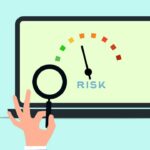In today’s fast-paced digital age, resilience is a crucial factor for any organisation’s success. As you navigate the ever-changing landscape of technology, having a robust plan in place to ensure business continuity is essential. Achieving true resilience means being prepared for the unexpected and being able to adapt – and even thrive – during challenging times.
With a strong resilience plan in place, you’ll find your organisation ready to respond to digital disruptions and keep your business going even in turbulent times. As you embrace the challenges of the digital age with confidence, this blueprint for resilience will be instrumental in helping your company not only survive but flourish in today’s competitive landscape.
Understanding Resilience in the Digital Era
Defining Organisational Resilience
Organisational resilience is the ability of your company to anticipate, respond, and adapt to unexpected events or challenges. In today’s rapidly changing digital landscape, it’s essential for your business to be agile and flexible in the face of new technologies, trends, and threats.
Resilience encompasses various aspects, including:
- People – Ensuring that your employees have the necessary skills and resources to adapt to new technologies and ways of working.
- Processes – Streamlining and optimising your business operations to respond quickly and efficiently to disruptions.
- Technology – Implementing robust, reliable, and secure systems that support your organisation’s needs and can adapt to change.
- Innovation – Fostering a culture that encourages creativity and innovation to stay ahead of the competition and quickly adapt to changing market conditions.
- Infrastructure – This includes physical considerations such as data centre layout and server room compliance, which ensures operational safety, legal adherence, and continuity in the face of environmental or technical threats.
Digital Transformation’s Role in Resilience
Digital transformation involves adapting your business to emerging technologies in all aspects of your organisation to drive innovation, efficiency, and productivity. Embracing digital transformation is critical for building organisational resilience in the following ways:
- Data-driven decision-making – By utilising advanced analytics, machine learning, and artificial intelligence, your business can make better-informed decisions, predict potential disruptions, and adapt quickly.
- Automation and efficiency – Leveraging digital tools like robotic process automation (RPA), chatbots, and cloud services can significantly improve the efficiency of your organisation’s processes, freeing up resources to focus on innovation and strategic initiatives.
- Collaborative and agile work environment – Digital collaboration tools and platforms can foster a more agile and flexible work environment, allowing your teams to work together more effectively, respond to challenges quickly, and adapt to new ways of working.
- Cybersecurity and risk management – Implementing modern cybersecurity technologies, practices, and policies plays a major role in optimising efficiency through digital transformation. Doing so will protect your organisation’s digital assets plays, ensure business continuity, and minimise the impact of cyber threats.
Business Continuity Planning Framework
Developing a Proactive Continuity Plan

A proactive approach to business continuity involves anticipating potential threats and disruptions, and planning for their contingencies. This helps to ensure that your organisation can continue operating during times of crisis. Here are some key steps to consider when developing your business continuity plan:
- Identify the risks – Compile a list of possible threats, including natural disasters, cyberattacks, and technological failures.
- Assess vulnerabilities – Evaluate your organisation’s susceptibility to these risks, taking factors such as location and infrastructure into account.
- Develop a business recovery plan – Outline the steps needed to restore operations and maintain them amidst disruptions.
- Test and update – Regularly evaluate the plan for effectiveness, and make updates based on any changes within the organisation, environment, or risk landscape.
Business Impact Analysis
Conducting a business impact analysis (BIA) is a crucial part of the planning process, as it helps you identify the critical functions that would have the greatest consequences if disrupted. To perform a thorough BIA, you should:
- List your organisation’s key functions and processes – Make an inventory of the essential operations required to maintain your business.
- Estimate recovery times – For each process, determine the maximum acceptable downtime and set realistic recovery time objectives.
- Identify dependencies – Recognise the resources, such as personnel, equipment, and suppliers, that are integral to each function.
- Assess potential impact – Determine the financial, operational, and reputational consequences if each function were to be disrupted.
- Rank priority levels – Prioritise the functions in terms of their importance to the organisation’s overall mission.
Crisis Management and Leadership
Leading during Unpredictability
In today’s fast-paced, digital world, unpredictability is a given. As a leader, being prepared for crises such as the unprecedented COVID-19 pandemic is vital. Here are a few tips on how to lead during uncertainty:
- Adaptability – Embrace change and be willing to adjust your plans as needed.
- Vision – Maintain a clear, long-term vision that guides your strategy formation in spite of short-term challenges.
- Empathy – Be sensitive to your employees’ needs and emotions during difficult times.
Communication and Decision-Making in Crisis
Strong communication is essential in a crisis. Here are some ways to enhance your communication and decision-making skills during challenging times:
- Transparency – Be open and honest with your team about the situation, even if you don’t have all the answers.
- Active Listening – Encourage feedback and consider diverse perspectives before making decisions.
- Timely Updates – Keep your team informed with regular updates on the crisis, e.g., via email or conference calls.
Technological Resilience and Cybersecurity
Protecting Against Cyber Threats
In today’s digital age, it is essential for your business to stay protected against cyberthreats. Cybersecurity is no longer just an IT concern–it is a business one. By setting up a business cybersecurity framework, you can build resilience against potential cyberattacks.
Here are some key components to consider when bolstering your cybersecurity:
- Risk Assessment – Identify your digital assets and determine the potential harm a cyberattack could cause.
- Policies and Procedures – Develop clear cybersecurity policies and procedures, making sure your entire organisation is educated and adherent to these guidelines.
- Multi-layered Defence – Implement a multi-layered approach to securing your systems, including firewalls, intrusion detection and prevention systems (IDPS), and strong user access management.
- Regular Monitoring – As cyberthreats are evolving constantly, maintaining up-to-date security measures is critical. Perform regular system scans, penetration testing, and vulnerability assessments to stay ahead of threats.
Technological Capabilities for Organisational Resilience
Embracing digital technologies can significantly contribute to your organisation’s overall resilience by helping you detect, respond to, and recover from cyberattacks. Here are some technological capabilities to consider:
- Cloud Infrastructure – Utilising cloud services for your data storage and processing can offer enhanced security and flexibility, making it easier for your organisation to adapt and recover from potential setbacks.
- Big Data and Analytics – Leveraging data and advanced analytics allows your business to identify trends, enhance decision-making, and mitigate risks. Harnessing these insights can improve your organisation’s resilience significantly.
- Automation and AI – Incorporating automation and artificial intelligence (AI) within your business processes can increase efficiency, reduce human error, and help you adapt to emerging threats.
- Backup and Recovery Systems – Ensure your data is protected and can be easily restored by implementing a robust backup and recovery solution. This will ensure business continuity, even in the face of a security breach.
People, Culture, and Change Management
Fostering a Resilient Workforce

In today’s digital age, it’s crucial to have a workforce that can adapt and respond effectively to changing circumstances. Fostering a resilient workforce means equipping your employees with the skills, mindset, and resources necessary to handle crises and emerge stronger.
Here are some ways to encourage resilience in your workforce:
- Offer training programmes that develop problem-solving, communication, and decision-making skills.
- Create a supportive work environment by promoting empathy, understanding, and teamwork among employees. Consider developing staff retention strategies to maintain workforce continuity.
- Embrace employee wellbeing with balance, flexibility, and access to mental health resources.
- Celebrate success and growth to reinforce a culture of learning and development.
HR’s Role in Organisational Agility
Human Resources (HR) plays an integral role in promoting agility in your organisation. By focusing on the following areas, HR can help build a culture that is adaptable and resilient:
- Recruitment – Attract candidates with agile mindsets, who are comfortable with change and have a strong track record of adaptability.
- Leadership development – Identify and groom leaders who promote flexibility, innovation, and continuous learning at all levels of the organisation.
- Performance management – Recognise and reward individuals who demonstrate adaptability, collaboration, and problem-solving.
- Employee engagement – Facilitate open lines of communication and ensure employees feel valued, heard, and supported, even during times of change.
Risk Management and Operational Continuity
Identifying and Managing Business Risks
Understanding your organisation’s unique set of business risks is critical to achieving business resilience in the digital age. To do this, you should conduct a comprehensive risk assessment that examines all potential threats to operational stability. This process can be enhanced by using tools like risk registers and focusing on high-impact, high-likelihood events.
When assessing risks, consider both internal and external factors such as:
- Natural disasters – Evaluate the possibility of earthquakes, floods, and other extreme weather events.
- Cyber threats – Assess vulnerabilities in your digital infrastructure and any potential for data breaches or system failures.
- Supply chain disruption – Investigate the stability of your suppliers, their contingency plans, and any risks associated with outsourcing or offshoring.
- Regulatory changes – Keep an eye on the evolving regulatory landscape and how it may impact your operations.
Ensuring Operational Resilience
Building operational resilience means having the ability to continue functioning in the face of adversity. To achieve this, you should focus on three key areas:
- Robustness – Craft a safe business space that can withstand events like thefts, cyber attacks, or even natural disasters. This might include investing in redundant systems, ensuring data backups, and employing robust cyber security measures.
- Agility – Enhance your organisation’s capacity to adapt to changes by encouraging collaboration and adopting agile management practices. Empower employees to make decisions, foster a culture of innovation, and develop adaptive strategies that can pivot quickly when needed.
- Recovery – Establish business continuity plans that detail recovery strategies for different risks. This should cover topics like incident response plans, IT disaster recovery, crisis communication strategies, and succession planning.
Adapting to Global Challenges and Uncertainties
In today’s fast-paced and interconnected world, it is essential for businesses like yours to be prepared for the unpredictable. By adopting resilience strategies, you can navigate through global challenges and uncertainties, allowing your organisation to succeed in the digital age.
Navigating Through a Pandemic like COVID-19
The COVID-19 pandemic has shown us the importance of flexibility, adaptability, and preparedness. To ensure business continuity during such challenging times, you should:
- Develop a crisis management plan – Create a comprehensive plan that outlines your organisation’s response to various crisis situations, including pandemics. This plan should be reviewed and updated regularly to ensure its effectiveness.
- Embrace remote work – Implement remote work policies and provide employees with the necessary tools and training to work effectively from home. This ensures minimal disruption to your business operations when physical distancing measures are in place.
- Maintain clear communication – Consistently communicate with your employees, customers, and suppliers during the pandemic, providing timely updates on your response. Clear and open communication can help maintain a sense of trust and stability.
Sustaining Through Supply Chain Disruptions
Global supply chains are vulnerable to disruptions caused by natural disasters, conflicts, or health crises. To build resilience and sustain through such challenges, consider the following steps:
- Identify risks and vulnerabilities – Assess your supply chain to identify key risk areas and vulnerabilities related to suppliers, logistics, manufacturing capabilities, and other factors. This will allow you to develop targeted strategies to mitigate potential disruptions.
- Diversify suppliers – Avoid relying too heavily on a single supplier or geographic region. By diversifying your supply base, you can better protect your business from potential disruptions and minimise the impact on your operations.
- Invest in technology – Adopt technologies, such as blockchain or digital twins, to improve supply chain visibility and traceability. This helps you to proactively identify potential risks and respond more effectively to disruptions.
Recovery, Innovation, and Growth

In today’s fast-paced business landscape, maintaining resilience is crucial for your business continuity. This section will explore recovery strategies and how driving growth through innovation can help your business thrive in the digital age.
Building Recovery Strategies
Successful recovery plans are the foundation of a resilient business. They ensure that your business can bounce back and regain momentum when setbacks occur. Here are a few key components to consider when developing your recovery strategy:
- Identify critical functions – Determine the most essential processes and infrastructure within your organisation that need immediate attention in case of disruption.
- Establish clear procedures – Outline specific actions to be taken when recovering from a crisis, assigning responsibility to each team member.
- Regularly review and update – Continuously assess the effectiveness of your recovery plan and make improvements as needed. By implementing a comprehensive recovery strategy, you’ll be better prepared for unexpected challenges and can maintain your business performance even in the face of adversity.
Driving Growth Through Innovation
Innovation is essential for reinventing your business in a digital landscape. Embracing a culture of innovation enables your organisation to tackle new challenges, stay ahead of competitors, and drive sustainable growth. Here are three main ways to foster innovation within your business:
- Developing dynamic capabilities – Invest time and resources to enable your business to adapt and evolve in response to market fluctuations and emerging trends.
- Encouraging entrepreneurship – Empower employees to take ownership of their ideas, embrace creativity, and explore innovative pursuits.
- Implementing emerging technologies – Stay informed about the latest technologies and seek opportunities to leverage them in your organisation.
Assessing Financial Impacts and Resource Utilisation
Financial Forecasting and Impact
One of the key aspects to consider in designing resilience is financial forecasting and its impact on your business. Assessing potential financial challenges is crucial for understanding the risks and managing expectations in the face of uncertainties.
To generate accurate financial forecasts, you should involve various stakeholders, including finance, sales, and operations departments. You can consider employing different forecasting methods, such as trend analysis, historical growth rates, and econometric models. This process will allow you to anticipate potential changes and improve your adaptability.
Here’s a brief outline of what you can do to tackle financial impacts:
- Create multiple scenario-based forecasts to cover a range of possible outcomes.
- Review and update your forecasts regularly to ensure they remain accurate and relevant.
- Develop a contingency plan to adapt quickly to unforeseen financial challenges.
- Leverage technology and tools to gain better insights into your financial health.
Optimising Resource Allocation
In the digital age, efficient resource allocation is necessary to improve business continuity and sustainability. By optimising the usage of resources, such as personnel, time, and assets, you can increase efficiency, reduce costs, and enhance earnings.
To achieve optimised resource allocation, consider the following:
- Conduct a thorough audit of your current resources and their utilisation levels.
- Identify bottlenecks and areas for improvement to make informed decisions on reallocating resources.
- Leverage technological advancements, such as automation, data analytics, and artificial intelligence, to improve your resource management capabilities.
- Promote a culture of adaptability by revisiting resource allocation plans regularly and making data-driven decisions.
Embracing Advanced Analytics and Automation
Leveraging Data for Strategic Decisions
In the digital age, understanding and making use of advanced analytics can significantly boost your business’s resilience. By dissecting the complexities of vast amounts of data, you can uncover valuable insights that inform strategic decisions. Here’s what you need to know:
- Develop a culture of data-driven decision-making – Encourage your team to embrace the power of data in addressing business challenges and shaping strategies.
- Explore diverse sources of information – Strengthen your intellectual capital by tapping into various data sources, such as customer feedback, market trends, and internal performance metrics.
- Use analytics tools and platforms – Implement robust analytics solutions that can help you make sense of your data and extract actionable insights.
The Role of AI in Enhancing Business Processes
Automation and artificial intelligence (AI) can be instrumental in bolstering your organisation’s resilience. They help streamline processes, reduce human error, and efficiently allocate resources. Here are a few ways to incorporate AI and automation into your business continuity plans:
- Intelligent process automation – Enhance your operations by automating routine tasks, freeing up your team to focus on more strategic initiatives.
- Adaptive decision-making – Use AI algorithms to anticipate potential disruptions and automatically adjust workflows to maintain business continuity.
- Predictive analytics – Leverage AI-powered analytics for more accurate forecasting of staffing needs, resource allocation, and other critical business operations.
Conclusion
In the ever-changing landscape of technology, it’s essential that you stay agile and open to new possibilities. By embracing innovation and prioritising resilience, you are positioning your business for long-term success in the digital age. Your dedication to business continuity not only benefits your organisation but also contributes to the stability of the wider economy.
As you continue on your journey towards resilience, harness the power of digital transformation and sustainable practices. This will add up to building a strong foundation that is adaptable, responsible, and prepared for the future.






